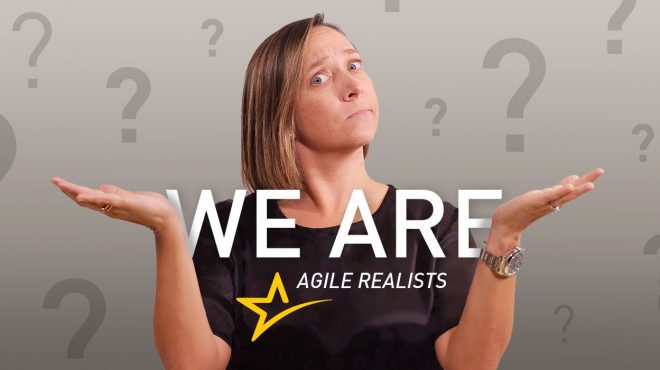Dec 4, 2019
Agile Mythbusting: The truth behind four Agile misconceptions and myths

Agile
Agile Methodology has a lot to offer for marketing departments and agencies. But so much of the literature about Agile is dominated by the software industry, it leads to misconception about how Agile works within the world of marketing. That’s why we wrote about the biggest lessons we’ve learned in four years as an Agile Agency.
If you’re an agency or marketing professional who’s curious about Agile, allow us to save you some confusion by dispelling some common misconceptions:
False: Agile Is Only For Software
Well, we’re proof this Agile myth isn’t true. At Starmark, we are more than just an agency, but we also still do all the marketing work an integrated communications agency does — from branding and advertising to data science and media planning. Moreover, Agile is gaining popularity in the government, education and healthcare sectors. Clearly, this is bigger than software.
Yes, Agile works great for Starmark’s big, ambitious web assignments. But all of our work has benefitted from having an integrated Agile team. Everyone here — from copywriters to media planners to social media strategists — is Agile, rather than just our developers.
False: Agile is a Management Style
We run into this misconception often — a manager or leader thinking you can wave your hands in a certain way and chant Kanban, Kanban, Kanban over a pile of index cards and your work will magically improve. But forget what you’ve heard, project managers and agency heads. Agile is not a management spell you can cast in order to conjure a more productive team.
Agile isn’t about management telling a team to do stuff—use this process, have this kind of meeting. If anything, a high-performing Agile environment is characterized by management ceding some control to the team in favor of a self-managing system.
If you like telling people what to do all day, you’re not going to like Agile. — Brett Circe, Chief Digital Officer, Starmark
This distinction is particularly important in an Agile marketing environment where the work has a high degree of uncertainty and a need for specialized creative problem-solving. As our Chief Digital Officer, Brett Circe, says, “If you like telling people what to do all day, you’re not going to like Agile.” Instead, managers in an Agile environment are more participatory. They curate future work and protect the team’s sprint plan by resolving blockers and actively setting expectations with clients. The team runs its own meetings and sets its own workflow within the sprint. By removing themselves from the day-to-day running of the work, our managers are able to take a broader strategic view for our clients.
The takeaway is that Agile isn’t by and for managers. It’s driven by and governed by a team that controls how work is planned and sequenced.
False: Agile is a Process
This myth is related to the one above. In actuality, Agile is a methodology based on a manifesto. The processes are a byproduct of the mindset and the methodology, not the other way around.
Things like daily check-ins, roadmapping and sprint retros are examples of processes that help enable a complex self-managing team to plan, examine and optimize its operation.
To put it another way, following a process doesn’t make a team Agile. If anything, this misconception is the #1 reason organizations fail to embrace Agile — because team members are expected to adopt another set of new processes without understanding the underlying rationale or enjoying any of the benefits.
False: Agile Stifles Creativity
At Starmark, we haven’t noticed any difference in the quality or quantity of creative work before or after Agile. The transformation also didn’t really change the way we go about coming up with creative ideas.
However, going Agile has changed creative life in one important way: giving the team control. While the relationship between stress and creative performance is complicated, a recent meta-analysis of studies on the topic did find a well established negative association between uncontrollability and creative performance. Translation: having a sense of control is important for creative performance.
Because Agile gives our team control over their time and the shape of their work, it’s now easier to make the space, collectively, for creativity to happen.
The team sprint plans and sets shared priorities. When we see the need for a big idea, we can sequence our work to a way that gives the ideas time to happen. Organizing concepting meetings is easier, and the entire integrated team can now contribute to the ideation process.
Now the big frustration is the right frustration — the thrill of confronting and tackling a business challenge in a creative way.
What Misconceptions Do You Have about Agile?
As Agile Methodology emerges as a hot topic in the business world, we encounter a lot of misunderstandings about how we work. Send us your questions. We’d be happy to answer based on our experience.
